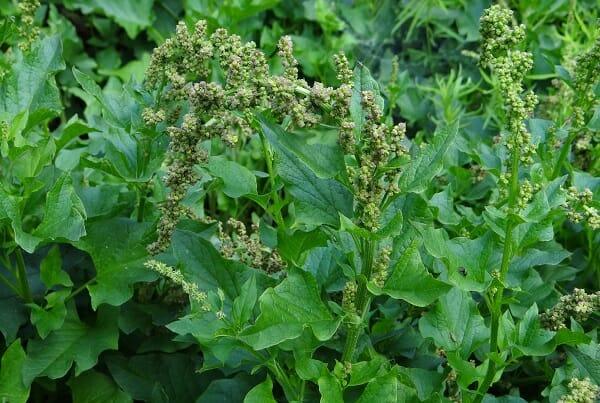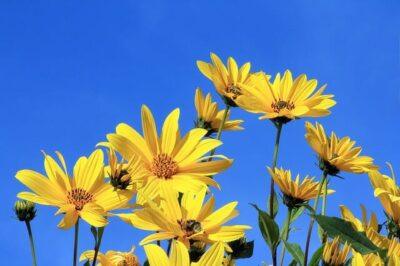Imagine being able to store fresh food and medicines in the ground indefinitely for emergency purposes, not only maintaining their nutrients, potency and freshness, but actually increasing their quantities and quality from year to year with little or no work.
This is exactly what you can do by growing perennial plants that are edible and/or medicinal. Here are some of the best ones for nutrition and ease of maintenance. Consider it your “survival insurance.”
1. Perennial brassicas (Brassica species) — Perennial brassicas like kale, broccoli and collards are super-nutritious and packed with health-promoting compounds. On top of this, their deeper root systems make them more drought-tolerant and possibly more nutritious, considering they have more potential to suck up nutrients. Brassica species, also known as the cruciferous family, require full sun and a rich soil fairly high in nitrogen. Some species to look out for include Tree Collards, Sea Kale, Pentland Brig, and Perennial Five Star Broccoli.
2. Good King Henry (Chenopodium bonus-henricus) — This perennial green was once grown as a popular addition to salads, and is nutritious and easy to grow. It requires moist soil, preferring part shade, but tolerating full sun, and grows in most soil types.
3. Chinese toon (Toona sinensis) — Although Chinese toons are technically trees, they are also an excellent salad green right away, since their leaves are edible and have a unique onion flavor, so they can be counted as a perennial green.
Just 30 Grams Of This Survival Superfood Provides More Nutrition Than An Entire Meal!
Their seeds also can be sprouted, as is done in China, for a high nutrition sprout similar to alfalfa or bean sprouts. The leaves are high in vitamin A and protein, and they require full sun and fertile, well-drained soil.
4. Jerusalem artichokes (Helianthus tuberosus) — Also called sunchokes, Jerusalem artichokes are a prolific and aggressively spreading root/tuber crop related to sunflowers. They require full sun and plenty of space, ideally separate from the rest of your garden since they can take over. Best grown in loose, deep soil for better root production. The best varieties have smooth tubers that are easier to wash. As with beans, it is best to start off eating a small amount until your system adapts to eating them.
5. Moringa (Moringa oleifera) — Moringa is a tropical tree that can only be grown in areas without frost as a perennial. However, in other areas this highly nutritious and medicinal tree also can be grown as an annual or as an indoor or greenhouse specimen. Its leaves are one of the most nutritious foods on the planet, having been used for decades by aid agencies in major plantings around famine-stricken areas to supply a wide spectrum of nutrients. Its seeds are highly medicinal, as well, and can be used to help purify water by killing microorganisms and viruses. Some say you can get seeds in one year if you start them indoors several months before the last frost and then plant them out in full sun with plenty of good organic fertilizer for the growing season.
6. Chinese yam (Dioscorea polystachya/Dioscorea divaricate/Dioscorea opposita) — This edible and medicinal vine produces a large root — up to three feet long — that has been eaten in Asia for centuries for its health-promoting properties. It is a good low-maintenance calorie crop, but great care should be taken anywhere warmer than zone 5, as the plant may become invasive. It requires full sun and a trellis to grow on, and will produce aerial tubers (small berry-like balls) that can be planted to produce new plants, or cooked and eaten.
7. Nettles (Laportaea and Utrica species) — Nettles are high in iron and protein, among other things, and also have medicinal value. Their leaves and seeds are both highly nutritious, although they must be steamed to neutralize the sting prior to eating. The younger more tender leaves are best. Wood Nettle (Laportaea canadensis) can grow in part to full shade while Stinging Nettle (Urtica dioica) prefers full sun to part shade, and they do best in rich, moisture retentive soil. Plant these somewhere out of the way (or in the way if you’re protecting something) to avoid the sting. Use gloves to harvest.
Final Thoughts
The best thing about perennials is that as long as you keep them well-mulched and build organic matter-rich soil, they’ll pretty much take care of themselves, giving you a low-maintenance way to continually increase your food supplies.
What perennials would you add to our list? What is your favorite edible perennial? Share your thoughts in the section below:
 Off The Grid News Better Ideas For Off The Grid Living
Off The Grid News Better Ideas For Off The Grid Living





